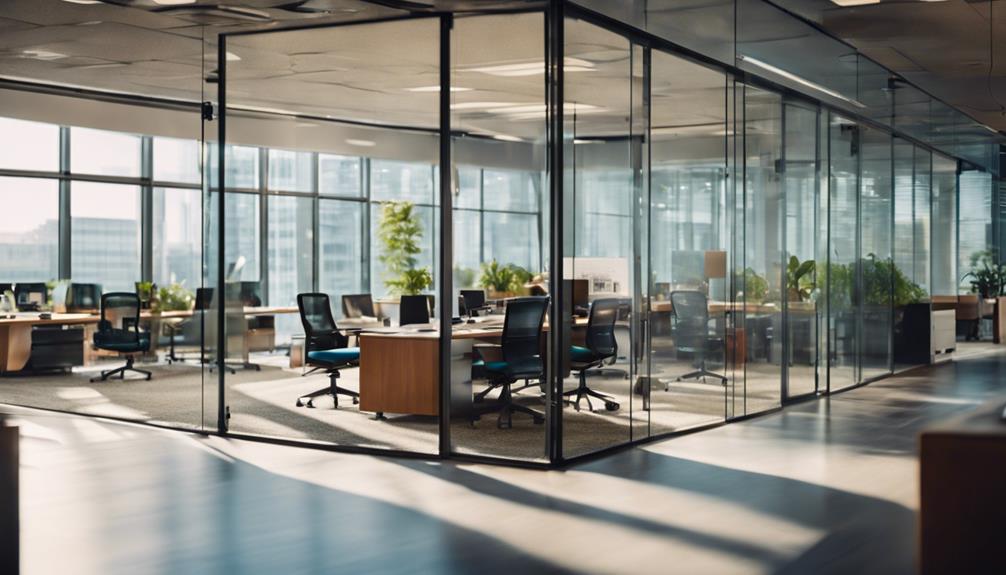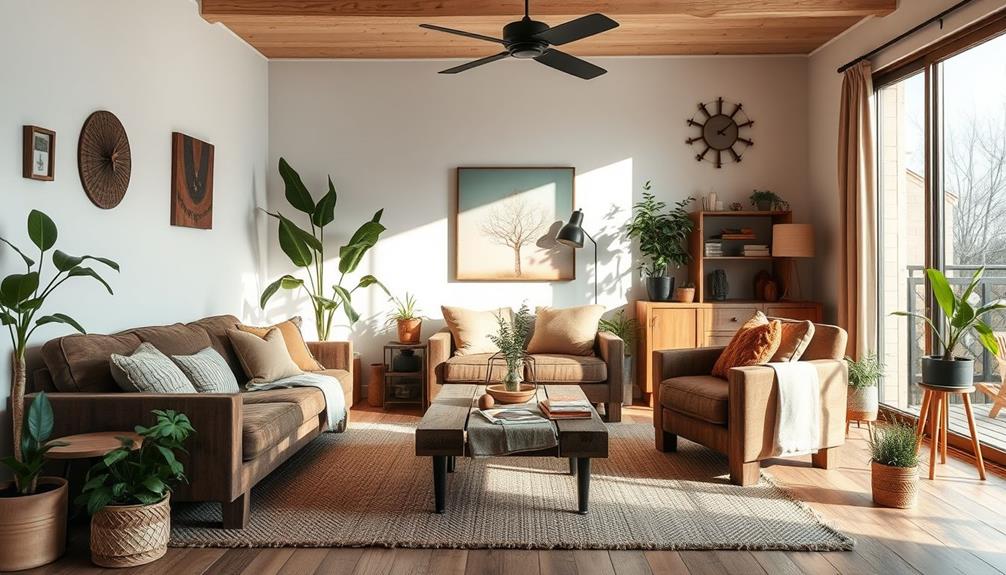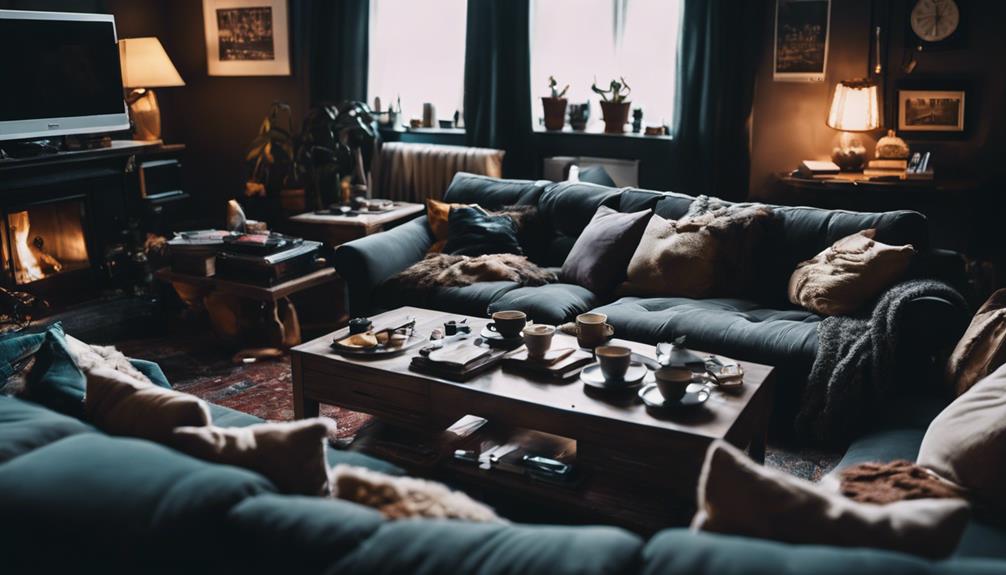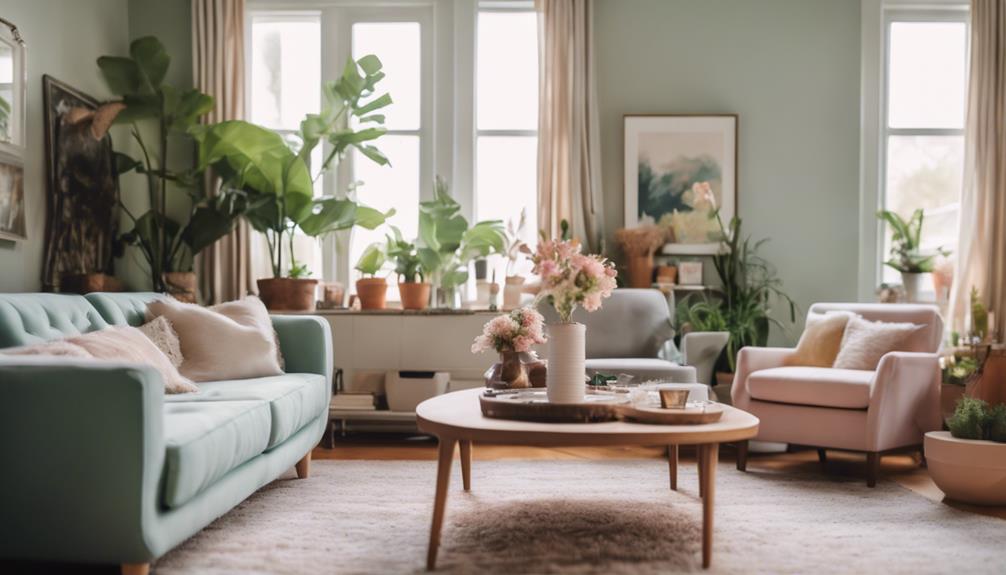Reimagining executive offices for today’s workforce involves prioritizing collaboration and inclusivity. Embracing open designs fosters trust among team members, and creating flexible spaces encourages communication, moving away from traditional closed doors and hierarchical setups. Incorporating cozy lounge areas, modular furniture, and technology to support remote connections can boost morale and drive productivity in your team. If you’re interested in learning more about specific design trends and solutions, there’s plenty to explore.
Key Takeaways
- Embrace open, flexible office designs that encourage collaboration and communication among all workforce levels.
- Incorporate modular furniture solutions that adapt to varying team needs and activities.
- Foster a culture of inclusivity by creating welcoming spaces that empower employee engagement and idea sharing.
- Utilize technology to enhance remote collaboration, ensuring all team members can connect seamlessly.
Historical Evolution of Executive Offices

Historically, executive offices have evolved from closed, imposing spaces that symbolized authority to more open and collaborative environments that foster inclusivity and communication.
Around a century ago, as modern corporations emerged, executive offices became centralized hubs for decision-making, emphasizing hierarchical structures. High walls and closed doors reinforced power dynamics, positioning CEOs above their teams. By the 1950s, large desks became status symbols, further projecting authority.
However, as workplace culture shifted, the design of executive offices began to change. Today, these spaces aim to empower all levels of the workforce, embracing openness and approachability. This shift towards a more inclusive office design has been driven by a desire to foster collaboration and creativity among employees. With top tech job opportunities in high demand, companies are recognizing the importance of creating a work environment that is conducive to innovation and teamwork. As a result, executive offices are now being designed to reflect these values, with a focus on creating spaces that inspire and motivate employees at every level.
This evolution not only reflects changing employee needs but also promotes better collaboration and communication, ultimately transforming the traditional view of executive leadership.
Impact of Work Culture Changes
Work culture changes have reshaped executive offices, making them more inclusive and collaborative environments that prioritize employee engagement.
You've likely noticed that today's leaders are more approachable, breaking down traditional hierarchies. This shift encourages open communication, fostering trust and collaboration among team members.
As executives adopt empathetic leadership styles, they empower employees to voice their ideas and concerns.
The increased focus on flexibility and adaptability has transformed rigid office layouts into dynamic spaces that inspire creativity and innovation.
By prioritizing employee well-being, organizations create a culture where everyone feels valued and motivated.
Ultimately, these changes not only enhance workplace morale but also drive better business outcomes, reflecting a modern approach to leadership and office design.
Modern Office Design Trends

Modern office design trends focus on creating flexible, collaborative spaces that enhance employee engagement and reflect the evolving needs of today's workforce.
You'll notice that these designs prioritize openness and adaptability, paving the way for a more connected work environment.
Picture these elements in your office:
- Open workstations that promote interaction and teamwork.
- Cozy lounge areas for informal brainstorming sessions.
- Adjustable furniture that caters to various activities and preferences.
This approach not only boosts creativity but also supports well-being, making your workspace more enjoyable and productive.
Embracing these trends can transform your office into a dynamic hub of collaboration and innovation.
Collaborative Space Innovations
Innovative collaborative spaces are reshaping how teams interact and generate ideas, fostering a culture of creativity and inclusivity. You'll find these spaces break down traditional barriers, encouraging open dialogue and teamwork. By designing areas that accommodate various work styles, organizations enhance engagement and innovation.
| Collaboration Feature | Benefits | Implementation Tips |
|---|---|---|
| Open Layouts | Boosts communication | Use glass partitions for visibility |
| Relaxed Seating | Encourages informal chats | Incorporate lounge areas |
| Technology Zones | Supports remote connection | Equip with video conferencing tools |
| Idea Boards | Promotes brainstorming | Place boards in high-traffic areas |
| Flexible Spaces | Adapts to team needs | Use modular furniture |
Embrace these innovations to elevate your team's productivity and creativity.
CORT's Flexible Furniture Solutions
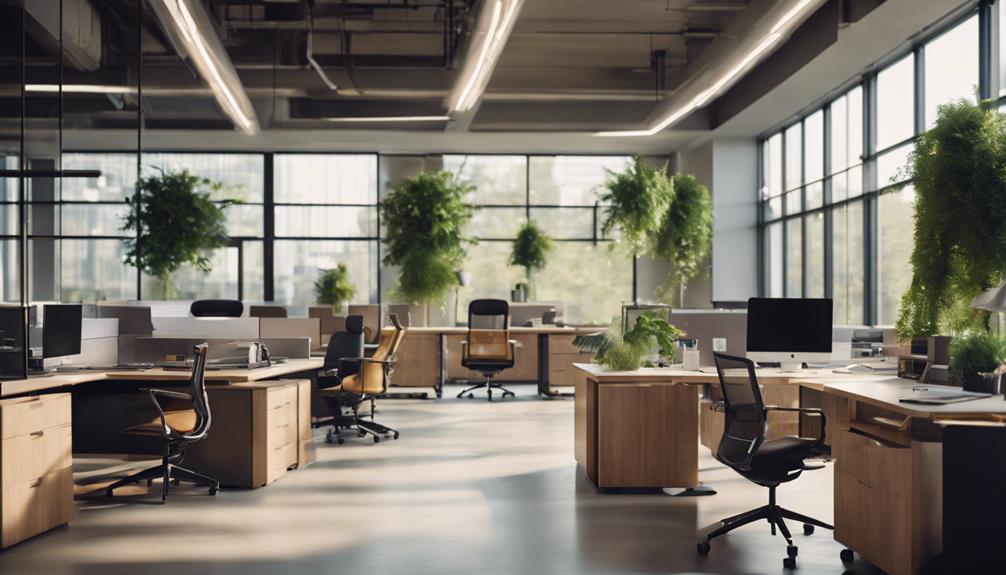
CORT's flexible furniture solutions adapt to your evolving office needs, enhancing collaboration and functionality in any workspace.
With modular options, you can easily reconfigure your environment to suit various activities, from brainstorming sessions to formal meetings.
Imagine your office featuring:
- Brody Sofas for comfortable, casual discussions.
- Dorian Coffee Tables that encourage a relaxed atmosphere.
- Eames Chairs offering stylish support during long workdays.
These rental pieces not only elevate your office's aesthetic but also provide the versatility necessary to respond to changing demands.
Future Office Design Trends
As workplaces evolve, flexibility and adaptability in office design will play a crucial role in meeting the diverse needs of today's workforce. You'll see trends focusing on technology integration, sustainability, and wellness, which are essential for a thriving environment. Shared executive spaces are likely to emerge, fostering collaboration and adaptability.
| Trend | Emotion Evoked | Benefits |
|---|---|---|
| Flexibility | Empowerment | Supports diverse work styles |
| Technology | Connection | Enhances remote collaboration |
| Sustainability | Responsibility | Promotes a healthier workplace |
| Wellness | Care | Boosts employee satisfaction |
| Collaboration | Unity | Strengthens team dynamics |
These trends will redefine your office experience, ensuring a dynamic culture that aligns with workforce expectations.
Adapting Leadership Styles

Adapting leadership styles is essential for maneuvering the complexities of today's diverse workforce. You need to embrace flexibility and empathy to foster an inclusive environment.
Consider these key elements:
- Active listening: Engage with your team to understand their perspectives and concerns.
- Transparent communication: Share information openly to build trust and collaboration.
- Empowerment: Encourage autonomy by allowing team members to take ownership of their projects.
Conclusion
As you explore the reimagined executive office landscape, you'll see that these spaces are like canvases, encouraging creativity and collaboration.
Embracing openness and flexibility not only transforms the way you work but also shapes a culture of empathy and engagement.
By prioritizing innovative design and adapting leadership styles, organizations can create environments where everyone thrives.
The future of leadership is here—it's time to step into these vibrant spaces and experience the positive impact firsthand.
